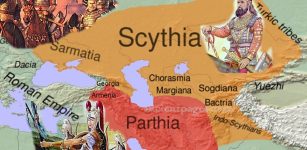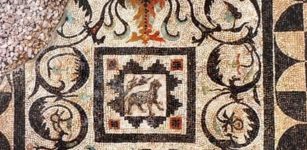DNA Reveals Neanderthals Interbred With Modern Humans For 7,000 Years
Jan Bartek - AncientPages.com - A recent analysis of DNA from ancient modern humans (Homo sapiens) in Europe and Asia has provided a more precise timeline for when Neanderthals interbred with modern humans. This interbreeding began approximately 50,500 years ago and continued for about 7,000 years until the Neanderthals started to disappear. As a result, many genes inherited from our Neanderthal ancestors remain in Eurasians today, comprising between 1% and 2% of our genomes.
Background: Illustration of an encounter between a group of Neanderthals (black) and a group of modern humans (red, top row) with offspring showing recent Neanderthal ancestry (red, bottom row), imagined as a cave art painting. DNA from bones and teeth of these early human ancestors is helping scientists understand the interactions between early Homo sapiens and the Neanderthals they encountered after migrating out of Africa. Credit: Leonardo Iasi, MPI-EVA. Created with Dall-E and BioRender.com. Front: Neanderthal man. Credit: Adobe Stock - catocala. Image compilation by AncientPages.com
The genome-based estimate aligns with archaeological evidence indicating that modern humans and Neanderthals coexisted in Eurasia for around 6,000 to 7,000 years.
The study involved analyzing present-day human genomes alongside 58 ancient genomes sequenced from DNA found in modern human bones across Eurasia. It determined an average date for interbreeding at about 47,000 years ago. Previously, estimates ranged from 54,000 to 41,000 years ago.
These new findings also suggest that the initial migration of modern humans from Africa into Eurasia was largely completed by around 43,500 years ago.
"The timing is really important because it has direct implications on our understanding of the timing of the out-of-Africa migration as most non-Africans today inherit 1-2% ancestry from Neanderthals," said Priya Moorjani, an assistant professor of molecular and cell biology at the University of California, Berkeley, and one of two senior authors of the study.
"It also has implications for understanding the settlement of the regions outside Africa, which is typically done by looking at archaeological materials or fossils in different regions of the world."
The extended period of gene flow may provide insight into why East Asians possess approximately 20% more Neanderthal genes compared to Europeans and West Asians. Archaeological evidence indicates that modern humans migrated eastward around 47,000 years ago, during which time they would have already integrated Neanderthal genes into their genetic makeup.
"We show that the period of mixing was quite complex and may have taken a long time. Different groups could have separated during the 6,000- to 7,000-year period and some groups may have continued mixing for a longer period of time," said Benjamin Peter of the University of Rochester in New York and the Max Planck Institute for Evolutionary Anthropology (MPI-EVA) in Leipzig, Germany. "But a single shared period of gene flow fits the data best."
"One of the main findings is the precise estimate of the timing of Neanderthal admixture, which was previously estimated using single ancient samples or in present-day individuals. Nobody had tried to model all of the ancient samples together," said Manjusha Chintalapati, a former UC Berkeley postdoctoral fellow now at the company Ancestry DNA. This allowed us to build a more complete picture of the past."
In 2016, Moorjani introduced a groundbreaking method for determining the timing of Neanderthal gene flow using often incomplete genomes from ancient individuals. At that time, only five archaic Homo sapiens genomes were available for study.
In a recent investigation, researchers Iasi and Chintalapati, along with their colleagues, applied this technique to 58 previously sequenced genomes of ancient Homo sapiens who lived in Europe and Western and Central Asia over the past 45,000 years. They also analyzed the genomes of 275 contemporary humans worldwide to pinpoint a more accurate date—47,000 years ago—for this genetic exchange.
Instead of presuming that gene flow occurred within a single generation, they employed more sophisticated models developed by Iasi and Peter to demonstrate that interbreeding persisted over approximately 7,000 years rather than happening sporadically.
This timeline for interbreeding between Neanderthals and modern humans was confirmed by another independent study conducted by MPI-EVA researchers.
Published on December 12 in the journal Nature, this study analyzed two newly sequenced Homo sapiens genomes from around 45,000 years ago and also identified a date of 47,000 years ago for these events.
"Although the ancient genomes were published in previous studies, they had not been analyzed to look at Neanderthal ancestry in this detailed way. We created a catalog of Neanderthal ancestry segments in modern humans. By jointly analyzing all these samples together, we inferred the period of gene flow was around 7,000 years," Chintalapati said.
"The Max Planck group actually sequenced new ancient DNA samples that allowed them to date the Neanderthal gene flow directly. And they came up with a similar timing as us."
The UC Berkeley/MPI-EVA research team conducted an analysis of the modern human genome, focusing on regions with genes inherited from Neanderthals and areas completely devoid of such genes. These gene-free regions, known as archaic or Neanderthal deserts, were found to have developed rapidly after interbreeding between the two groups.
This suggests that certain Neanderthal gene variants in these parts of the genome may have been harmful to modern humans. Interestingly, early modern human samples over 40,000 years old—from locations such as Oase Cave in Romania, Ust'-Ishim in Russia, Zlatý kun in the Czech Republic, Tianyuan in China, and Bacho Kiro in Bulgaria—already exhibited these deserts within their genomes.
Neanderthal ancestry in modern humans. Credit: Leonardo Iasi, MPI-EVA. Created with Dall-E and BioRender.com.
"We find that very early modern humans from 40,000 years ago don't have any ancestry in the deserts, so these deserts may have formed very rapidly after the gene flow," said Iasi.
"We also looked at the changes in Neanderthal ancestry frequency over time and across the genome and found regions that are present at high frequency, possibly because they carry beneficial variants that were introgressed from Neanderthals."
Most of the high-frequency Neanderthal genes are related to immune function, skin pigmentation and metabolism, as reported in some previous studies.
One immune gene variant inherited from Neanderthals confers protective effects on coronavirus that causes COVID-19, for example. Some of the Neanderthal genes involved in the immune system and skin pigmentation actually increased in frequency in Homo sapiens over time, implying that they may have been advantageous to human survival.
"Neanderthals were living outside Africa in harsh, Ice Age climates and were adapted to the climate and to the pathogens in these environments. When modern humans left Africa and interbred with Neanderthals, some individuals inherited Neanderthal genes that presumably allowed them to adapt and thrive better in the environment," Iasi said.
"The fact that we find some of these regions already in 30,000-year-old samples shows that some of these regions were actually adapted immediately after the introgression," Chintalapati added.
Other genes, such as the gene conferring resistance to coronaviruses, may not have been immediately useful but became useful later on.
See also: More Archaeology News
"The environment changes and then some genes become beneficial," Peter said.
Moorjani is currently looking at Neanderthal sequences in people of East Asian descent, who not only have a greater percentage of Neanderthal genes, but also some genes—up to 0.1% of their genome—from another early hominin group, the Denisovans.
"It's really cool that we can actually peer into the past and see how variants inherited from our evolutionary cousins, Neanderthals and Denisovans, changed over time," Moorjani said. "This allows us to understand the dynamics of the mixture of Neanderthals and modern humans."
The study was published in the journal Science
Written by Jan Bartek - AncientPages.com Staff Writer




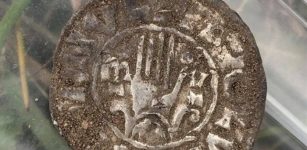

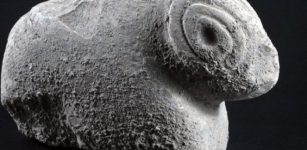

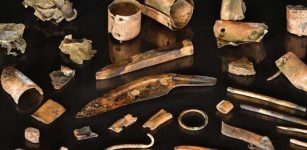

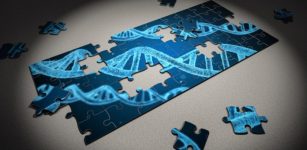


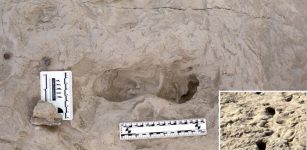

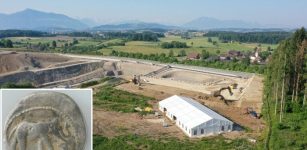

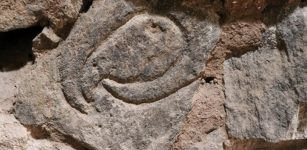
![The fossilized skull of Homo erectus discovered at the site of the grotto of Hualong, in the district of Dongzhi, in the Chinese province of Anhui [Credit: Xinhua]](https://www.ancientpages.com/wp-content/uploads/2015/11/dongzhiman1-307x150.jpg)

